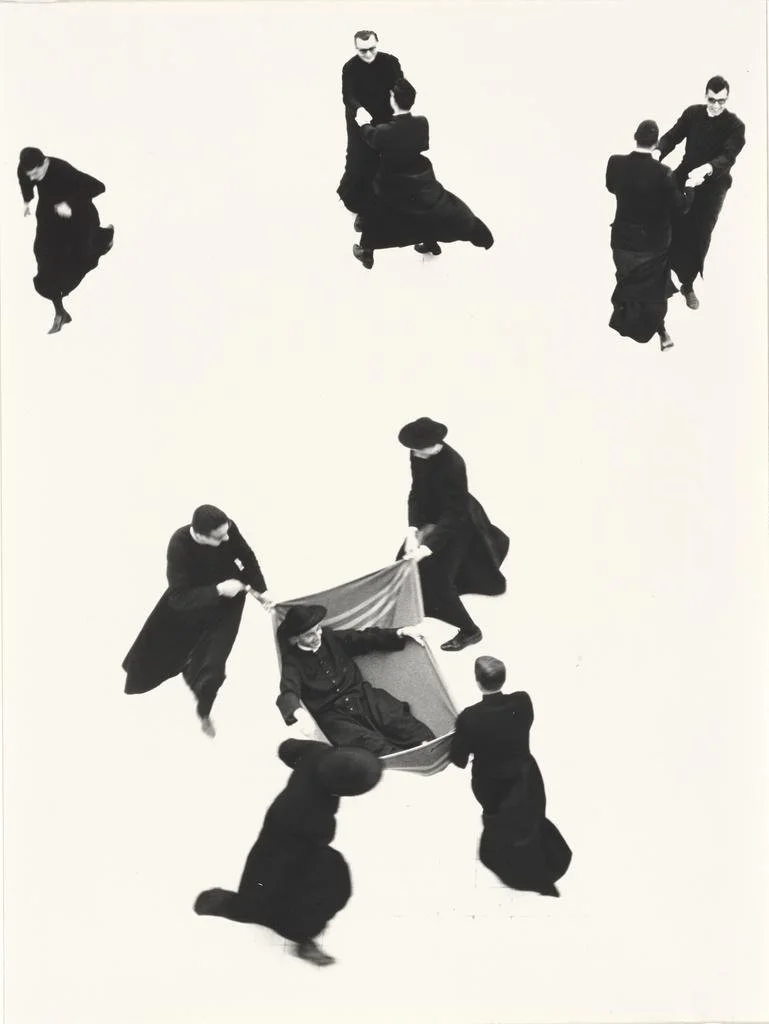GIACOMELLI AT THE GETTY
The Getty Museum holds one of the world’s preeminent collections of photographs, and between 2016 and 2020, L.A–based collectors Daniel Greenberg, who passed in 2021 and Susan Steinhauser donated 109 photographs by Mario Giacomelli to the Museum. Their collection covers the artist’s oeuvre, from his earliest images to those made in the final years of his life.
Born into poverty and largely self-taught, Mario Giacomelli became one of Italy’s leading photographers. After purchasing his first camera in 1953, he began creating humanistic portrayals of people in their natural environments and dramatic abstractions of the landscapes. He was working as a typographer, and painted on the weekends. He continued to photograph in his hometown of Senigallia, on the Adriatic coast of Italy, for almost fifty years. Rendered in high-contrast black and white, his photographs are often gritty and raw- he used the little-known Kobell Press camera. Today he is recognized as one of the most original photographic artists of the 20th century, who embraced the way that a photograph can convey the poetic, dreamlike and unfathomable.
Among Giacomelli’s most memorable images are those of pretini (young priests) in the seminary of Senigallia, whom he captured playing in the snow or relaxing in the courtyard. Once again juxtaposing the distinctive shapes of black-clad figures (this time, seminarians in cassocks) against a white ground (snow-covered or sun-drenched settings), these photographs suggest a more lighthearted mood than is evident in other series. Although appearing to have been choreographed, they are the result of the priests’ unbridled joviality as they run, throw snowballs, or play ring-around-the-rosy, and of Giacomelli’s foresight to let the scenes unfold as he recorded them from the building’s rooftop.
After Giacomelli had won the trust of the seminarians, his interaction with them was brought to an abrupt end when he provided the young men with cigars for photographs he intended to submit to a competition on the theme of smoking. The rector denied him further access. Giacomelli later applied the title I Have No Hands That Caress My Face to this series, from the first two lines of a poem by Father David Maria Turoldo (Italian, 1916–1992) about young men who seek solitary religious life. This title lends poignancy to the moments of exuberance and camaraderie that accompanied study for such a calling. Getty Website
“Of course [photography] cannot create, nor express all we want to express. But it can be a witness of our passage on earth, like a notebook. . .
. . . For me each photo represents a moment, like breathing. Who can say the breath before is more important than the one after? They are continuous and follow each other until everything stops. How many times did we breathe tonight? Could you say one breath is more beautiful than the rest? But their sum makes up an existence.”
—Mario Giacomelli, 1987
Cover Visual Credit
Young Priests, No. 71, 1961–63; printed 1981, Mario Giacomelli, gelatin silver print. The J. Paul Getty Museum, Gift of Daniel Greenberg and Susan Steinhauser. Reproduced courtesy Mario Giacomelli Archive © Rita and Simone Giacomelli
My Mother, 1956; printed 1981, Mario Giacomelli, gelatin silver print. The J. Paul Getty Museum, Gift of Daniel Greenberg and Susan Steinhauser. Reproduced courtesy Mario Giacomelli Archive © Rita and Simone Giacomelli
The Good Earth, No. 219, 1964–65; printed 1981, Mario Giacomelli, gelatin silver print. The J. Paul Getty Museum, Gift of Daniel Greenberg and Susan Steinhauser. Reproduced courtesy Mario Giacomelli Archive © Rita and Simone Giacomelli





